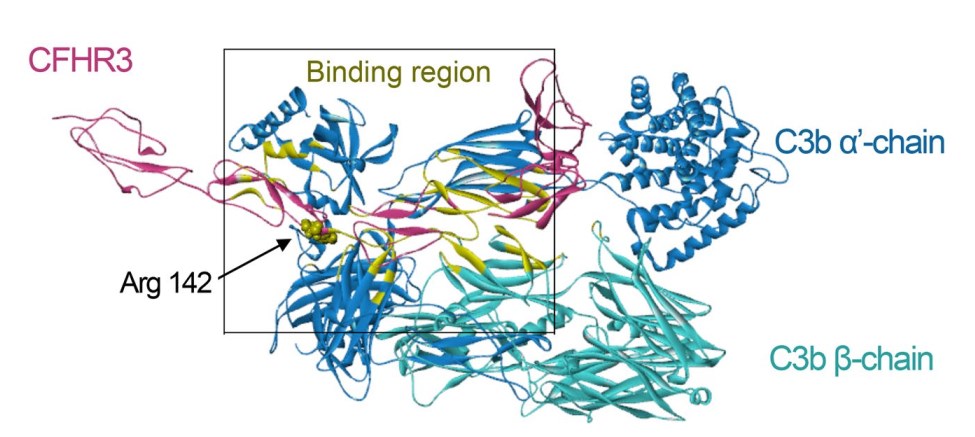Complement Factor H Related Protein 3
Complement factor H (CFH) is an essential regulator of normal complement activity, which inhibits complement alternative pathway activation through the interaction with the C3b fragment. In humans, the CFH family comprises a variant and a group of highly related proteins, including complement factor H related (CFHR) 1, CFHR2, CFHR3, CFHR4, and CFHR5. Based on the N-terminal conserved domains, these proteins are primarily divided into Group I (CFHR1, CFHR2, and CFHR5) and Group II (CFHR3 and CFHR4).
CFHR3 is a plasma protein containing five short consensus repeat (SCR) domains, which is a member of Group II proteins lacking the N-terminal dimerization domain. The SCR1 and SCR2 of CFHR3 share high amino acid homology to SCR6 and SCR7 of CFH, respectively, implying that CFHR3 may bind to C3b fragment like CFH. The SCR3-5 of CFHR3 show high identity to CFHR4. The circulating concentration of CFHR3 is similar to CFHR1, about 70-100 μg/mL. Several CFHR3 variants have been isolated from plasma (ranging from 35 to 56 kDa), which may represent several different glycosylation forms of CFHR3. CFHR3 can bind to the complement C3b, C3d, and heparin with high affinity, which enable CFHR3 to compete with CFH for binding to C3b, thereby inhibiting the complement activation. The CFHR3 variants or mutations have been observed to associate with the atypical hemolytic uremic syndrome (aHUS) and macular degeneration age-related 1.
 Fig.1 Three-dimensional models of CFHR3/C3b complex. (Ding, 2017)
Fig.1 Three-dimensional models of CFHR3/C3b complex. (Ding, 2017)
Reference
-
Ding, Y.; et al. A haplotype in CFH family genes confers high risk of rare glomerular nephropathies. Scientific Reports. 2017, 7(1): 6004.
For Research Use Only.

 Fig.1 Three-dimensional models of CFHR3/C3b complex. (Ding, 2017)
Fig.1 Three-dimensional models of CFHR3/C3b complex. (Ding, 2017)